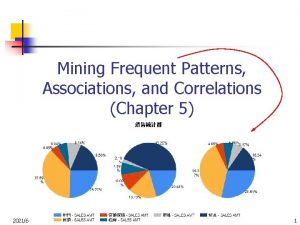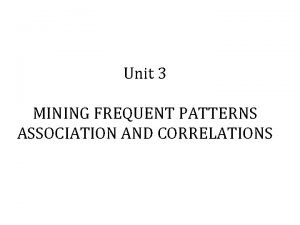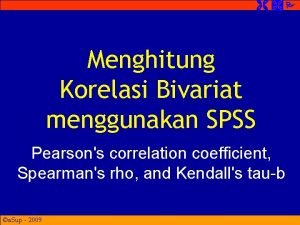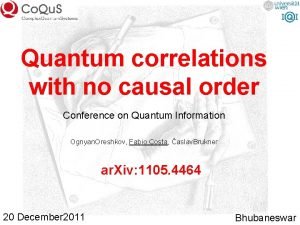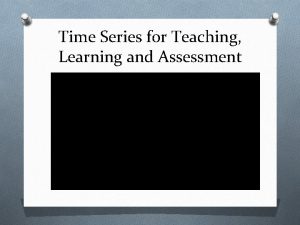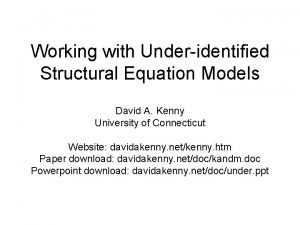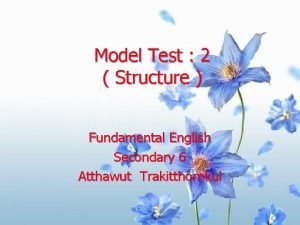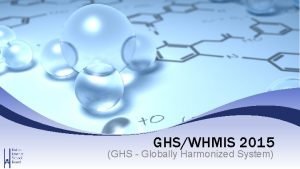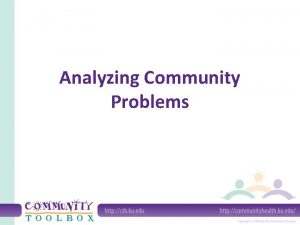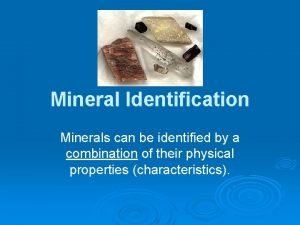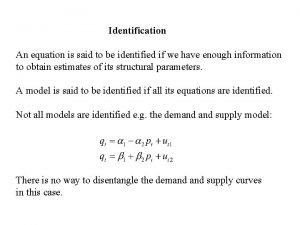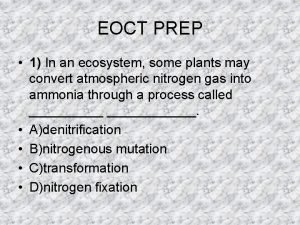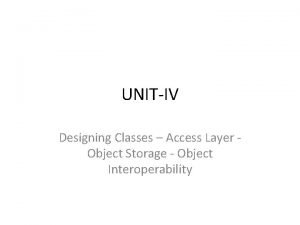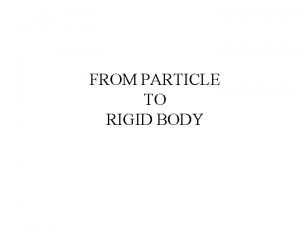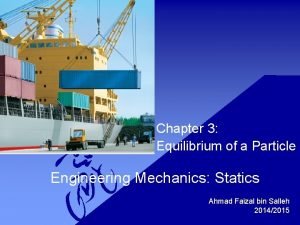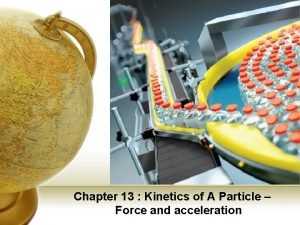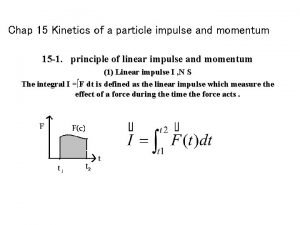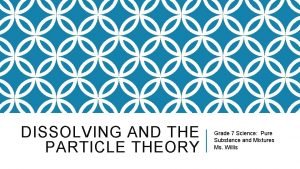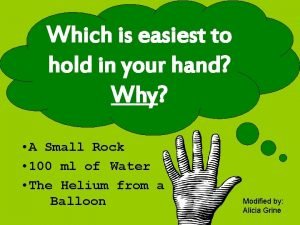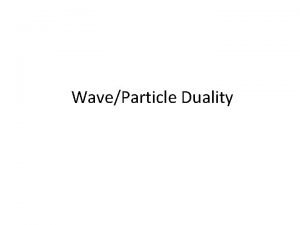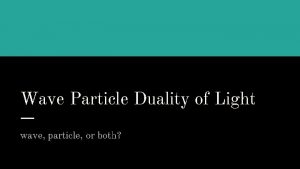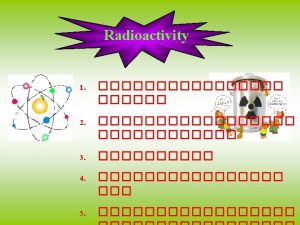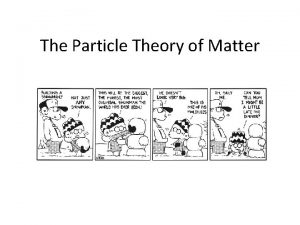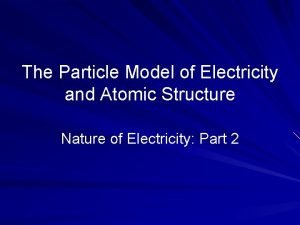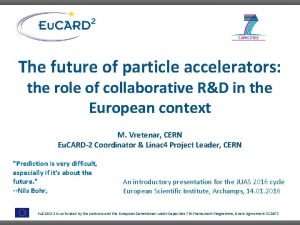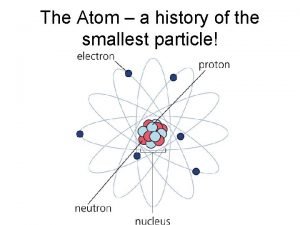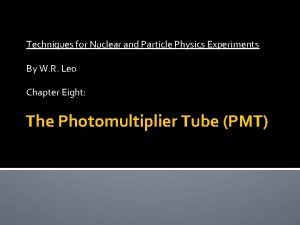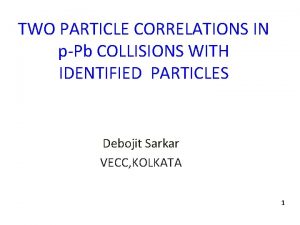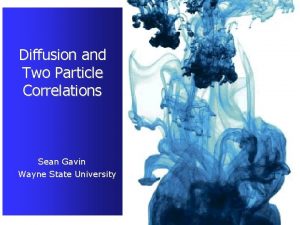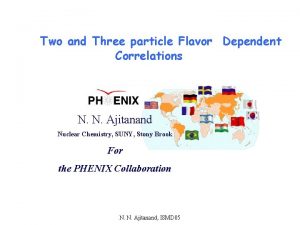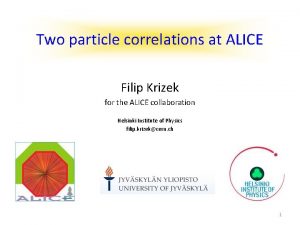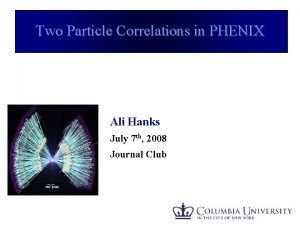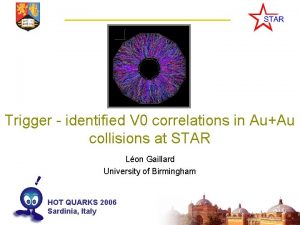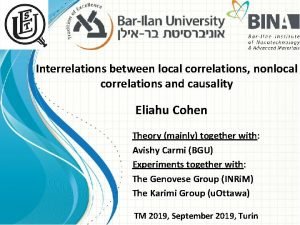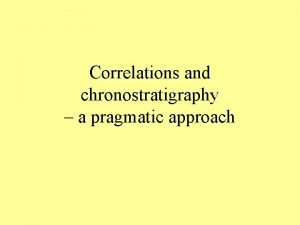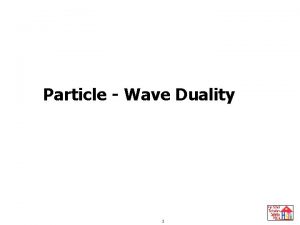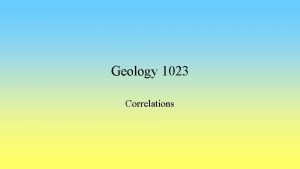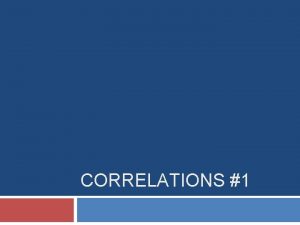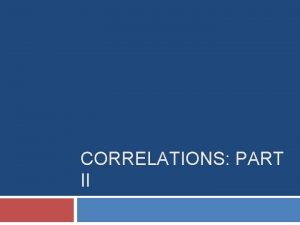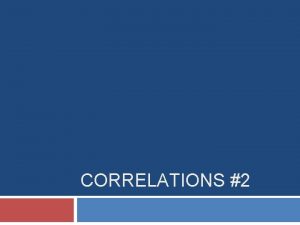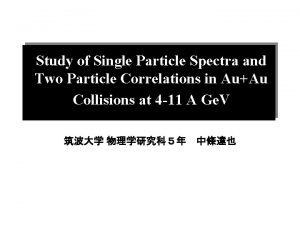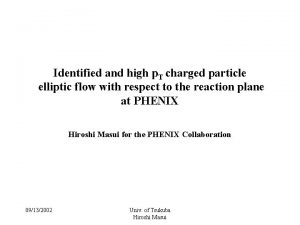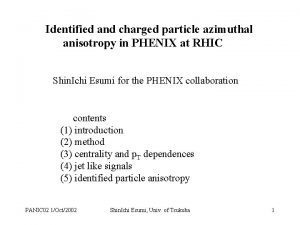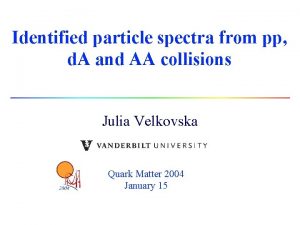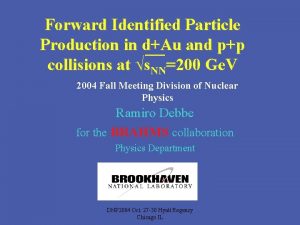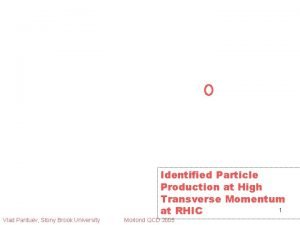TWO PARTICLE CORRELATIONS IN pA WITH IDENTIFIED AND





























![Projections to Dj (0 -20%)-(60 -100%) [+-0. 9] [+-0. 8] Dj Dj [+-1. 0] Projections to Dj (0 -20%)-(60 -100%) [+-0. 9] [+-0. 8] Dj Dj [+-1. 0]](https://slidetodoc.com/presentation_image/028e2c2b96f906653eed62c4906a3762/image-30.jpg)
![Projections to Dj (0 -20%)-(60 -100%) [+-1. 2] [+-1. 3] Dj Dj [+-1. 5] Projections to Dj (0 -20%)-(60 -100%) [+-1. 2] [+-1. 3] Dj Dj [+-1. 5]](https://slidetodoc.com/presentation_image/028e2c2b96f906653eed62c4906a3762/image-31.jpg)
![Projections to Dj (0 -20%)-(60 -100%) [+-0. 8] [+-1. 6] Dj Dj [(+-1. 6)-(+-0. Projections to Dj (0 -20%)-(60 -100%) [+-0. 8] [+-1. 6] Dj Dj [(+-1. 6)-(+-0.](https://slidetodoc.com/presentation_image/028e2c2b96f906653eed62c4906a3762/image-32.jpg)











- Slides: 43

TWO PARTICLE CORRELATIONS IN p-A WITH IDENTIFIED AND UNIDENTIFIED TRIGGER PARTICLES Debojit Sarkar VECC, KOLKATA

MOTIVATION u CMS has observed a near side ridge in high-multiplicity pp and p-Pb collisions u. ALICE has observed “Double-Ridge” in p-Pb collisions. u. Yield associated with Unidentified trigger has contribution from both baryon and meson triggers. u. Our goal is to study identified trigger dependence of ridge & jet cone yield in p-A & p-p.

ar. Xiv: 0804. 3858 v 1 LONG RANGE CORRELATION—INITIAL STAGE EFFECT u If there is no medium formation due to the collision , the correlation between two correlated particles separated by large pseudorapidity difference must be originated at an earlier time due to causality argument. (carrying some signature of initial stage effect)

Data, Events and Tracks selection u DATA: p-Pb at √s. NN= 5. 02 Te. V LHC 13 b(pass 3)+LHC 13 c(pass 2)[AOD] u Monte Carlo: p-A , DPMJET LHC 13 b 2_fix_2 production u EVENTS: k. INT 7 triggered events with |zvertex|<10 cm. u TRACK CUTS: 1. Filterbit->768(Hybrid tracks) 2. Tracks passed-> Ali. AODTrack: : k. Primary 2. Pt >0. 2 Ge. V. 3. -0. 9<η<0. 9. 4. No of TPC Clusters>70. 5. Chi. Sq/ndf ≤ 4. 0

Basic QA Plots DCAxy<2. 4 No. of TPC clusters>70 DCAz<3. 2 Chi 2/ndf<4

Two-Particle Correlations • Correlation between a trigger and an associated particle in certain p. T intervals (p. T, assoc < p. T, trig) • Signal distribution S contains correlation within the same event • Background B contains "correlation" between different events

– Background Corrects for pair acceptance & pair efficiency – Normalized such that it is unity around (Dh, Dj) = (0, 0) SAME EVENT Mixed event normalized to unity MIXED EVENT Signal/Background

STAR Results • Trigger particles are divided into two classes(only TPC is used): a) Pions b)Protons+kaons • nσ π variable the number of standard deviations of the particular track’s d. E/dx value from the Bethe–Bloch expectation for a charged pion.

Particle Identification In ALICE § In this analysis both TPC & TOF are used for identification of particles (1. 0<=Pt<=4. 0 Gev/c) Plots Roberto Preghenella ---Workshop on proton-nucleus collisions at the LHC ECT* Trento (6 th - 10 th May 2013)

PID in this Analysis u Trigger particles are identified into two classes—>1) Mesons(Pions+Kaons) 2) Baryons(Protons) u Associated particles are identified into three classes 1) Pions 2) Kaons 3) Protons u Both TPC & TOF are used for trigger and associated particle identification. u Each trigger and associated particle must have proper TPC and TOF response(i. e each track must have to pass PID QA cuts associated with both TPC AND TOF ). u nsigma cut method(for both TPC AND TOF ) is used for particle identification. u To decide the value of the nsigma cut and to determine the purity of the sample MC study(as a baseline) has been done.

counts 2<=Pt<=2. 5 Gev/c counts n. Sigma TOF MC 2. 5<=Pt<=3. 0 Gev/c nσ π 3. 0<=Pt<=3. 5 Gev/c nσ π counts TRIGGER Pt REGION 3. 5<=Pt<=4. 0 Gev/c nσ π

counts nσ π counts 2<=Pt<=2. 5 Gev/c TRIGGER Pt REGION 3. 0<=Pt<=3. 5 Gev/c nσ π counts n. Sigma TOF DATA 2. 5<=Pt<=3. 0 Gev/c nσ π 3. 5<=Pt<=4. 0 Gev/c nσ π

n. Sigma TOF MC 2. 5<=Pt<=3. 0 Gev/c Counts(Log Scale) 2<=Pt<=2. 5 Gev/c nσ π TRIGGER Pt REGION 3. 0<=Pt<=3. 5 Gev/c nσ π Counts(Log Scale) 3. 5<=Pt<=4. 0 Gev/c nσ π

Counts n. Sigma TPC MC Counts 2<=Pt<=2. 5 Gev/c 3. 0<=Pt<=3. 5 Gev/c TRIGGER Pt REGION Counts nσ π 2. 5<=Pt<=3. 0 Gev/c nσ π 3. 5<=Pt<=4. 0 Gev/c nσ π

n. Sigma TPC MC 2. 5<=Pt<=3. 0 Gev/c Counts(Log Scale) 2<=Pt<=2. 5 Gev/c nσ π TRIGGER Pt REGION nσ π 3. 5<=Pt<=4. 0 Gev/c Counts(Log Scale) 3. 0<=Pt<=3. 5 Gev/c nσ π

n. Sigma TPC DATA 2. 5<=Pt<=3. 0 Gev/c Counts(Log Scale) 2<=Pt<=2. 5 Gev/c nσ π 3. 0<=Pt<=3. 5 Gev/c TRIGGER Pt REGION nσ π Counts(Log Scale) 3. 5<=Pt<=4. 0 Gev/c nσ π

Trigger particle Identification u To remove electrons from pion sample(in trigger & associated regions) particles having nσ π (TPC)>=3. 9 are rejected. u In case of TPC, in this Pt region(2. 0<=pt<=4. 0 Gev/c) the kaon and proton nσ π curves are top of each other, so using TPC baryon meson separation is not effective. u At present , TOF is used for that purpose: For 2. 0<=pt<=2. 5 For 2. 5<=pt<=3. 0 For 3. 0<=pt<=3. 5 For 3. 5<=pt<=4. 0 if 6. 9<= nσ π TOF<=14. 0 if 4. 57<= nσ πTOF<=10. 0 if 3. 45<= nσ πTOF<=7. 5 if 2. 85<= nσ π TOF<=6. 2 identified as baryons(protons) if -3. 5< nσ π TOF<=5. 6 if -3. 5< nσ πTOF<=4. 04 if -3. 5< nσ π TOF<=2. 9 if -3. 5< nσ π TOF<=2. 3 identified as mesons(pions+kaons) § Purity of trigger mesons 99. 3903% § Purity of trigger baryons 93. 1217% u May be a combined TPC-TOF nsigma cut can provide better purity To be studied in future

n. Sigma TOF MC 1. 2<=Pt<=1. 4 Gev/c Counts(Log Scale) 1<=Pt<=1. 2 Gev/c nσ π 1. 6<=Pt<=1. 8 Gev/c Counts(Log Scale) 1. 4<=Pt<=1. 6 Gev/c Associated Pt Region nσ π

n. Sigma TOF DATA 1. 2<=Pt<=1. 4 Gev/c Counts(Log Scale) 1<=Pt<=1. 2 Gev/c nσ π Associated Pt Region 1. 6<=Pt<=1. 8 Gev/c Counts(Log Scale) 1. 4<=Pt<=1. 6 Gev/c nσ π

n. Sigma TPC MC 1<=Pt<=1. 2 Gev/c Counts(Log Scale) 1. 2<=Pt<=1. 4 Gev/c nσ π Associated Pt Region 1. 6<=Pt<=1. 8 Gev/c Counts(Log Scale) 1. 4<=Pt<=1. 6 Gev/c nσ π

n. Sigma TPC DATA 1<=Pt<=1. 2 Gev/c Counts(Log Scale) 1. 2<=Pt<=1. 4 Gev/c nσ π 1. 6<=Pt<=1. 8 Gev/c Counts(Log Scale) 1. 4<=Pt<=1. 6 Gev/c Associated Pt Region nσ π

n. Sigma TOF MC n. Sigma TPC MC 1. 8<=Pt<2. 0 Gev/c Counts(Log Scale) n. Sigma TPC DATA Associated Pt Region 1. 8<=Pt<2. 0 Gev/c nσ π Counts(Log Scale) nσ π n. Sigma TOF DATA 1. 8<=Pt<2. 0 Gev/c nσ π

Associated Particle Identification u To remove electrons from pion sample(in trigger & associated regions) particles having nσ π (TPC)>=3. 9 are rejected. u To identify associated hadrons combined TPC-TOF 3 sigma cut has been applied: Purity of associated pions 98. 8775% Purity of associated kaons 97. 2526% Purity of associated protons 98. 7177% u In this presentation associated particle(1. 0<=pt<2. 0) means (pions +kaons +protons) with the above mentioned purity.

Ratio of Signal to Mixed to get the Correlation function baryontrigallasso— 0 -20% centrality alltrigallasso----0 -20% centrality ∆η ∆η Dj mesontrigallasso— 0 -20% centrality ∆η Dj Dj

alltrigallasso— 60 -100% centrality Baryontrigallasso— 60 -100% centrality ∆η ∆η Dj Dj mesontrigallasso— 60 -100% centrality ∆η Dj

Projections to Dh 0 -20% centrality ∆η 60 -100% centrality u Raw Correlation projected onto ∆η averaged over Dj for 0 -20% & 60 -100% centrality events ∆η

0 -20% centrality Projections to Dj Dj 60 -100% centrality Dj u Raw Correlation projected onto ∆φ averaged over |∆η| < 1. 7 on the near side & away side

§ Can we separate the jet and ridge components? § No ridge seen in 60 -100% and similar to pp § what remains if we subtract 60 -100%? Shifted to same baseline by subtracting the value at Dj = 1. 3 ar. Xiv: 1212. 2001 v 1 • ar. Xiv: 1212. 2001 v 1 Ø Low multiplicity class agrees with results from pp collisions

Ridge u Associated yield per trigger particle for the 0– 20% centrality class, after subtraction of the associated yield obtained in the 60– 100% centrality class. Ø Associated yield per trigger particle(unidentified) in ∆φ and ∆η ∆η ∆η (0 -20%)-(60 -100%) Dj Dj Ø Associated yield per trigger particle (MESON) in ∆φ and ∆η ∆η Dj Ø Associated yield per trigger particle (BARYON) in ∆φ and ∆η
![Projections to Dj 0 2060 100 0 9 0 8 Dj Dj 1 0 Projections to Dj (0 -20%)-(60 -100%) [+-0. 9] [+-0. 8] Dj Dj [+-1. 0]](https://slidetodoc.com/presentation_image/028e2c2b96f906653eed62c4906a3762/image-30.jpg)
Projections to Dj (0 -20%)-(60 -100%) [+-0. 9] [+-0. 8] Dj Dj [+-1. 0] Dj [+-1. 1] Dj
![Projections to Dj 0 2060 100 1 2 1 3 Dj Dj 1 5 Projections to Dj (0 -20%)-(60 -100%) [+-1. 2] [+-1. 3] Dj Dj [+-1. 5]](https://slidetodoc.com/presentation_image/028e2c2b96f906653eed62c4906a3762/image-31.jpg)
Projections to Dj (0 -20%)-(60 -100%) [+-1. 2] [+-1. 3] Dj Dj [+-1. 5] [+-1. 4] Dj Dj
![Projections to Dj 0 2060 100 0 8 1 6 Dj Dj 1 60 Projections to Dj (0 -20%)-(60 -100%) [+-0. 8] [+-1. 6] Dj Dj [(+-1. 6)-(+-0.](https://slidetodoc.com/presentation_image/028e2c2b96f906653eed62c4906a3762/image-32.jpg)
Projections to Dj (0 -20%)-(60 -100%) [+-0. 8] [+-1. 6] Dj Dj [(+-1. 6)-(+-0. 8)] Dj

• TODO: • We observe small difference in pion and proton+kaon triggered yield in different ∆η and Dj regions. It need to be checked rigorously. • Need to check purity of the trigger sample with combined TPC-TOF nsigma cut and to repeat the study. • Need to repeat this analysis with identified associated to know the chemistry in jet & ridge regions. • Need to apply the efficiency correction. • Do the same for pp & and Pb. Pb 2. 76 Te. V

Thank You

BACKUP

Efficiency with Pt

Efficiency with Eta

Since some parts of the SPD were switched off during many run periods, inefficient regions for common track reconstruction are apparent. To ensure uniform distributions in the (η, φ) plane, an approach of hybrid tracks of following types is used:

Eta distribution Phi distribution


TRACKING EFFICIENCY CORRECTION Efficiency with Eta η

Normalized such that it is unity around (Dh, Dj) = (0, 0) Mixed event normalized to unity

EVENT MIXING TO CONSTRUCT BACKGROUND u Centrlity is divided into { 0, 1, 2, 3, 4, 5, 10, 20, 30, 40, 50, 60, 70, 80, 90, 100. 0}; u Zvertex of the events are divided into {-10, -8, -6, -4, -2, 0, 2, 4, 6, 8, 10} u Corresponding to a particular centrality & Zvertex bin, trigger particles from a particular event are paired with associated particles from 5 other events of the same centrality & Zvertex bin to construct the background. ∆η Dj u Is there any problem in the binning of centrality & Zvertex(definition of pool)?
 Mining frequent patterns associations and correlations
Mining frequent patterns associations and correlations Closed patterns and max-patterns
Closed patterns and max-patterns Mining frequent patterns associations and correlations
Mining frequent patterns associations and correlations Korelasi pearson spss
Korelasi pearson spss Quantum correlations with no causal order
Quantum correlations with no causal order Spurious correlations
Spurious correlations Illusory correlations ______.
Illusory correlations ______. Under-identified model
Under-identified model Whmis 2015 aix safety v3 answers
Whmis 2015 aix safety v3 answers 1000 species of finch have been identified
1000 species of finch have been identified Identified motivation
Identified motivation Identified motivation
Identified motivation Whmis describes the nature of the hazard
Whmis describes the nature of the hazard Identification of the system for development
Identification of the system for development Characteristics of family
Characteristics of family Criteria when identifying community problems
Criteria when identifying community problems Identified by password
Identified by password Non-linear multimedia examples
Non-linear multimedia examples This is one of the identified reasons why
This is one of the identified reasons why A(n) has no signs or signals to regulate traffic.
A(n) has no signs or signals to regulate traffic. This determines the heaviness of a mineral
This determines the heaviness of a mineral Print reading involves two principal elements
Print reading involves two principal elements Identified equation
Identified equation The organelle identified in the picture as #10
The organelle identified in the picture as #10 Dash classes identified during access layer design
Dash classes identified during access layer design Rigid body vs particle
Rigid body vs particle Particle equilibrium in 2d and 3d engineering mechanics
Particle equilibrium in 2d and 3d engineering mechanics Kinetics of a particle force and acceleration
Kinetics of a particle force and acceleration Kinetics of a particle: impulse and momentum
Kinetics of a particle: impulse and momentum Graph the particle's velocity and speed where defined
Graph the particle's velocity and speed where defined Particle movement in solids liquids and gases
Particle movement in solids liquids and gases Dissolving particle model
Dissolving particle model Solid heat
Solid heat Etching cleaning process
Etching cleaning process Wave particle duality questions
Wave particle duality questions Wave-particle duality
Wave-particle duality Derived properties of powder
Derived properties of powder Whats a beta particle
Whats a beta particle What is the particle theory of matter
What is the particle theory of matter Particle model of electricity
Particle model of electricity The long-term future of particle accelerators
The long-term future of particle accelerators What would happen
What would happen Pmt particle physics
Pmt particle physics Homogeneous mixture particle diagram
Homogeneous mixture particle diagram
